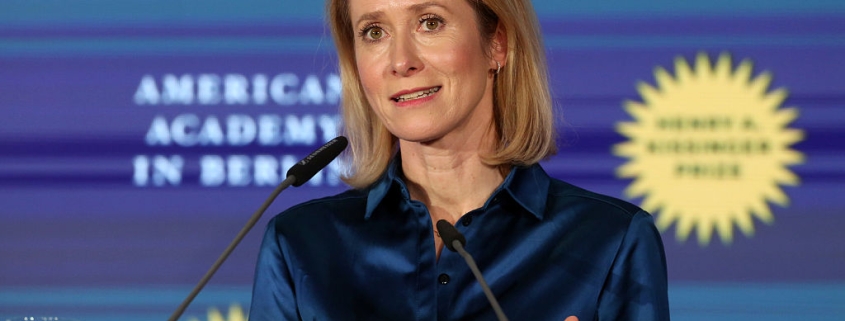How world order changes
After the Berlin Wall came down in 1989, and almost a year before the Soviet Union collapsed in late 1991, US President George H W Bush proclaimed a ‘new world order’. Now, just two months into Donald Trump’s second presidency, Kaja Kallas, the European Union’s top diplomat, has declared that ‘the international order is undergoing changes of a magnitude not seen since 1945.’ But what is ‘world order’, and how is it maintained or disrupted?
In everyday language, order refers to a stable arrangement of items, functions, or relations. Thus, in domestic affairs, we speak of an ‘orderly society’ and its government. But in international affairs, there is no overarching government. With arrangements among states always subject to change, the world is, in a sense, ‘anarchic’.
Anarchy is not the same as chaos, though. Order is a matter of degree: it varies over time. In domestic affairs, a stable polity can persist despite a degree of ungoverned violence. After all, organised and unorganised violent crime remain a fact of life in most countries. But when violence reaches too high a level, it is seen as an indication of a failed state. Somalia may have a common language and ethnicity, but it has long been a site of battling clans; the ‘national’ government in Mogadishu has little authority outside the capital.
The German sociologist Max Weber famously defined the modern state as a political institution with a monopoly on the legitimate use of force. But our understanding of legitimate authority rests on ideas and norms that can change. Thus, a legitimate order stems from judgments about the strength of norms, as well as simple descriptions about the amount and nature of violence within a state.
When it comes to world order, we can measure changes in the distribution of power and resources, as well as in adherence to the norms that establish legitimacy. We can also measure the frequency and intensity of violent conflict.
A stable distribution of power among states often involves wars that clarify a perceived balance of power. But views about the legitimacy of war have evolved over time. For example, in 18th-century Europe, when Prussia’s King Frederick the Great wanted to take the province of Silesia from neighboring Austria, he simply took it. But after World War II, states created the United Nations, which defined only wars of self-defense as legitimate (unless otherwise authorised by the Security Council).
To be sure, when Russian President Vladimir Putin invaded Ukraine and occupied its territory, he claimed that he was acting in self-defense against the eastward expansion of NATO. But most UN members voted to condemn his behavior, and those that did not—such as China, North Korea, and Iran—share his interest in counterbalancing American power.
While states can lodge complaints against others in international courts, these tribunals have no capacity to enforce their decisions. Similarly, while the UN Security Council can authorise states to enforce collective security, it has rarely done so. The five permanent members (Britain, China, France, Russia, and the United States) each wield a veto, and they have not wanted to risk a major war. The veto functions like a fuse or circuit-breaker in an electrical system: it is better to have the lights go out than to have the house burn down.
Moreover, a world order may become stronger or weaker because of technological changes that alter the distribution of military and economic power; domestic social and political changes that alter a major state’s foreign policy; or transnational forces like ideas or revolutionary movements, which can spread beyond governments’ control and alter public perceptions of the prevailing order’s legitimacy.
For example, after the 1648 Peace of Westphalia, which ended the European wars of religion, the principle of state sovereignty became enshrined in the normative world order. But in addition to changes in the principles of legitimacy are changes in the distribution of power resources. By the time of World War I, the US had become the world’s largest economy, allowing it to determine the outcome of the war by intervening militarily. Although US President Woodrow Wilson tried to change the normative order with his League of Nations, US domestic politics pushed the country toward isolationism, which allowed the Axis powers to attempt to impose their own order in the 1930s.
After World War II, the US accounted for half of the world economy, but its military power was balanced by the Soviet Union’s, and the UN’s normative power was weak. With the Soviet Union’s collapse in 1991, the US enjoyed a brief unipolar moment, only to overextend itself in the Middle East while permitting the financial mismanagement that culminated in the 2008 financial crisis. Believing the US was in decline, Russia and China changed their own policies. Putin ordered an invasion of neighboring Georgia, and China replaced Deng Xiaoping’s cautious foreign policy with a more assertive approach. Meanwhile, China’s robust economic growth allowed it to close the power gap with America.
Relative to China, American power did decline; but its share of the world economy has remained at around 25 percent. As long as the US maintained strong alliances with Japan and Europe, they would represent more than half the world economy, compared to a mere 20 percent for China and Russia.
Will the Trump administration maintain this unique source of America’s continued power, or is Kallas right that we are at a turning point? The years 1945, 1991, and 2008 were also turning points. If future historians add 2025 to the list, it will be a result of US policy—a self-inflicted wound—rather than any inevitable secular development.



